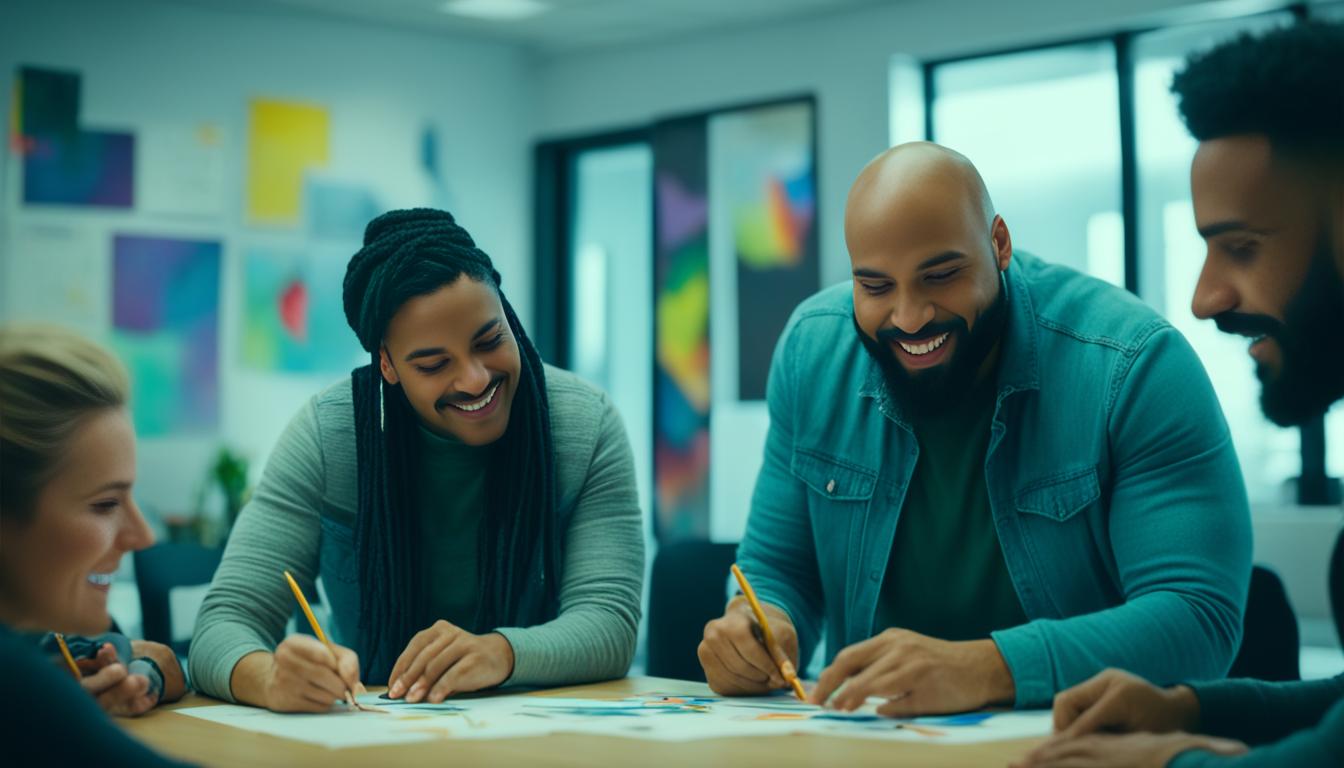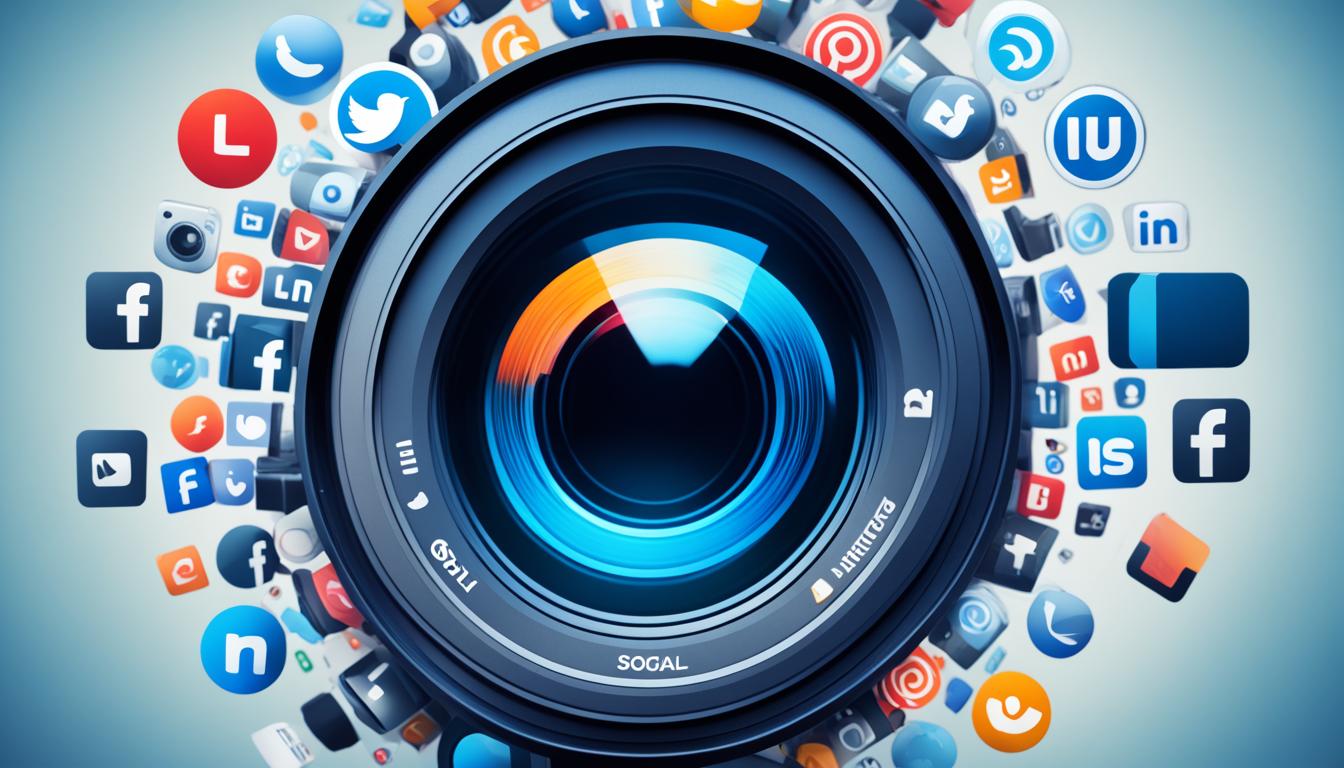In the creative industry, collaboration and teamwork are essential for success. Working together with art directors and editors allows us to tap into their expertise and perspectives, creating stronger and more impactful projects. Whether we are part of a design team, a content creation team, or a visual storytelling team, effective collaboration with these professionals is key to achieving our goals.
Collaborating with art directors and editors opens up opportunities for learning and growth. Their vast knowledge and skills can teach us new techniques, approaches, and industry insights. By working closely with them, we can expand our own expertise and enhance our creative abilities. Furthermore, their unique perspectives and experiences can challenge us to think outside the box, pushing the boundaries of our creativity.
Communication with design professionals is another crucial aspect of collaboration. Clear and open communication ensures that everyone is on the same page and working towards a shared vision. Art directors and editors provide valuable feedback, guidance, and direction, helping us refine our ideas and bring them to life in the most effective way.
Key Takeaways:
- Collaborating with art directors and editors enhances our skills and knowledge in the creative industry.
- Their unique perspectives inspire creativity and innovative solutions.
- Clear communication with design professionals ensures a shared vision for the project.
- Working with art directors and editors leads to stronger and more impactful projects.
- Effective collaboration is essential for success in the creative industry.
The Importance of Collaboration in Creative Projects
Collaboration is the key to success in creative projects. When individuals join forces and work together, the results can be truly remarkable. Whether it’s collaborating on artistic projects or engaging in graphic design collaboration, teamwork plays a crucial role in bringing creative visions to life and achieving extraordinary outcomes.
One of the significant benefits of collaboration in creative projects is the ability to leverage the collective knowledge and ideas of a team. When different individuals with diverse backgrounds and expertise come together, their combined strengths and perspectives pave the way for innovative solutions and groundbreaking ideas.
Collaboration also leads to more efficient production processes, improving productivity and streamlining workflows. By working together, team members can tap into each other’s expertise, saving time and effort while producing higher quality work.
Moreover, collaboration fosters motivation among team members. When individuals work together and learn from each other, they feel a sense of support and encouragement. This boost in motivation fuels creativity and inspires team members to push the boundaries of their own capabilities, leading to even greater artistic achievements.
In addition, collaboration is a powerful tool for personal and professional growth. By collaborating, individuals gain insights into their own strengths and weaknesses. They learn to value different perspectives and develop their communication and problem-solving skills, all of which contribute to their overall growth and development.
Effective communication, problem-solving, and decision-making are at the core of successful collaboration. When team members collaborate, they engage in open dialogue, share ideas, and collectively find solutions to challenges. This collaborative approach ensures that projects move forward smoothly, obstacles are overcome, and the final results exceed expectations.
Collaboration also plays a vital role in visual storytelling. Whether it’s a film, a marketing campaign, or any other creative endeavor, collaboration allows for a more cohesive and engaging narrative. Each team member brings their unique perspective to the table, enriching the storytelling and captivating the audience.
Ultimately, collaboration is the driving force behind the success of artistic projects. By embracing collaboration and fostering a culture of teamwork, creative professionals can unlock their full potential, create extraordinary work, and leave a lasting impact on the industry.
Benefits of Collaboration in Creative Projects:
- Increased productivity through collective knowledge and ideas.
- More efficient production processes and higher quality work.
- Fostering motivation and inspiring creativity.
- Personal and professional growth opportunities.
- Effective communication, problem-solving, and decision-making.
- Enhanced visual storytelling through diverse perspectives.
The Role of Art Directors in Collaboration
In the creative industry, art directors play a crucial role in facilitating effective collaboration. They are responsible for overseeing the visual design of projects and ensuring that the client’s message is conveyed clearly and creatively. Art directors work closely with clients to understand their objectives and translate them into compelling graphic concepts.
However, the role of art directors in collaboration goes beyond just visual design. They collaborate with a diverse range of professionals, including designers, writers, and editorial teams, to effectively coordinate the creative process. Through their guidance and leadership, art directors ensure that the final product meets client expectations and effectively communicates the intended message.
One of the key responsibilities of art directors is bridging the gap between art and editorial teams. They foster a successful partnership between these two integral parts of the creative process, ensuring seamless collaboration throughout the project. By facilitating communication and encouraging collaboration, art directors ensure that the creative vision is realized and the project’s goals are achieved.
Editor and Designer Partnership
The partnership between art directors and editors is particularly crucial in ensuring successful collaboration. Editors play a vital role in refining and shaping the content, while art directors focus on the visual aspects. Through close collaboration, they combine their expertise to create a cohesive and engaging final product.
Art directors and editors collaborate on various aspects, such as selecting images, designing layouts, and determining the overall aesthetic of the project. This partnership allows for a harmonious blend of visual storytelling and editorial excellence, resulting in a seamless and impactful final product.
“Collaboration between art directors, designers, and editorial teams is essential in delivering high-quality creative projects.”
Overall, art directors play an instrumental role in collaboration within the creative industry. Their expertise, leadership, and ability to bridge the gap between art and editorial teams contribute to the success of projects. By collaborating with editorial teams and fostering a strong partnership between editors and designers, art directors ensure the effective execution of the creative vision and the delivery of exceptional work.

Benefits of Collaboration for Creative Projects
Collaboration in creative projects offers a multitude of benefits that enhance the overall outcome. By leveraging the diverse skills and ideas of team members, collaboration increases productivity and fosters innovation. Through collective problem-solving and the inclusion of multiple perspectives, collaboration leads to the development of more impactful and high-quality work.
One of the key advantages of collaboration is its ability to fuel creativity. When individuals come together, they pool their creativity, allowing for fresh ideas and unique approaches to surface. This creative synergy often results in solutions that are far more imaginative and inspiring than what an individual could achieve alone.
Furthermore, collaboration promotes motivation and boosts efficiency within the team. By working together, team members feel a sense of shared ownership and responsibility, which drives them to put forth their best efforts. This collective motivation propels projects forward and helps maintain a high level of engagement and focus throughout the creative process.
Collaboration also offers distinct benefits in the realm of visual storytelling. When collaborating on visual narratives, teamwork allows for a more comprehensive and engaging storytelling experience. Different perspectives and skills merge to create layered and impactful narratives that captivate and connect with audiences on a deeper level.
As team members work together, the satisfaction derived from the collaborative process is shared among all participants. This sense of ownership and achievement serves as a powerful motivator and can positively impact career prospects. Collaborative work experiences demonstrate an individual’s ability to effectively collaborate, showcasing desirable teamwork skills to potential employers and clients.
Overall, collaboration is a cornerstone of successful creative projects. It harnesses the strengths of team members, fosters creativity, and enhances the quality of work produced. By embracing collaboration, creative professionals can unlock their full potential and achieve remarkable results.
| Benefits of Collaboration in Creative Projects |
|---|
| Enhances productivity by leveraging diverse skills and ideas |
| Leads to more innovative and impactful outcomes |
| Improves quality through collective problem-solving and multiple perspectives |
| Fosters creativity, motivation, and efficiency within the team |
| Allows for a more comprehensive and engaging narrative in visual storytelling |
| Creates a sense of ownership and satisfaction among team members |
| Positively impacts career prospects by showcasing collaborative work experience |
Conclusion
Collaboration is the cornerstone of successful creative projects in the industry. Working closely with art directors and editors is crucial for effective teamwork and achieving outstanding outcomes. By collaborating with these professionals, we not only gain personal and professional benefits, but also elevate the quality, productivity, and creativity of our projects.
Through collaboration, we have the opportunity to learn from others, expand our skills, and gain new perspectives. It allows us to tap into the collective knowledge and expertise of our peers, fostering personal growth and self-awareness. Collaboration also enhances the creative process by facilitating effective communication, problem-solving, and decision-making.
In particular, art directors play a pivotal role in bridging the gap between art and editorial teams. Their leadership, guidance, and coordination ensure smooth collaboration and enable us to deliver projects that meet client expectations while effectively conveying the intended message. Together, we create harmonious partnerships that drive creativity and success.
Teamwork and collaboration are essential components of the creative industry. By embracing collaboration, we unlock our collective potential, leading to better outcomes and opening doors for career advancement opportunities. So let’s continue to collaborate, learn, and grow together in our pursuit of excellence in the creative industry.
FAQ
What is the importance of collaborating with art directors and editors?
Collaborating with art directors and editors is crucial for effective teamwork and successful creative projects in the creative industry. It enhances communication, coordination, and the overall quality of the final product.
How does collaboration benefit creative projects?
Collaboration in creative projects leads to increased productivity, higher quality work, greater creativity, and more innovative and impactful outcomes. It also fosters motivation, personal and professional growth, and a comprehensive and engaging narrative in visual storytelling.
What role do art directors play in collaboration?
Art directors play a pivotal role in collaboration by providing leadership, guidance, and communication between art and editorial teams. They ensure that the client’s objectives are met and that the final product effectively communicates the intended message.
What are the benefits of collaboration in creative projects?
Collaboration in creative projects increases productivity, efficiency, and creativity by leveraging the diverse skills and ideas of team members. It improves problem-solving and decision-making, enhances the overall quality of work, and contributes to personal and professional growth.
Why is collaboration important in the creative industry?
Collaboration is essential in the creative industry because it enhances teamwork, communication, and problem-solving. It leads to better results in artistic projects and visual storytelling, fosters creativity and motivation, and creates career advancement opportunities.
How Important is Collaboration in Directing Non-Models in Photography Compared to Working with Art Directors and Editors?
When directing non-models in photography, collaboration is key. Offering tips for working subjects helps to create a comfortable and cooperative environment. However, when working with art directors and editors, effective communication is crucial for achieving the desired outcome. Collaboration ensures that everyone is on the same page and working towards a shared vision.




